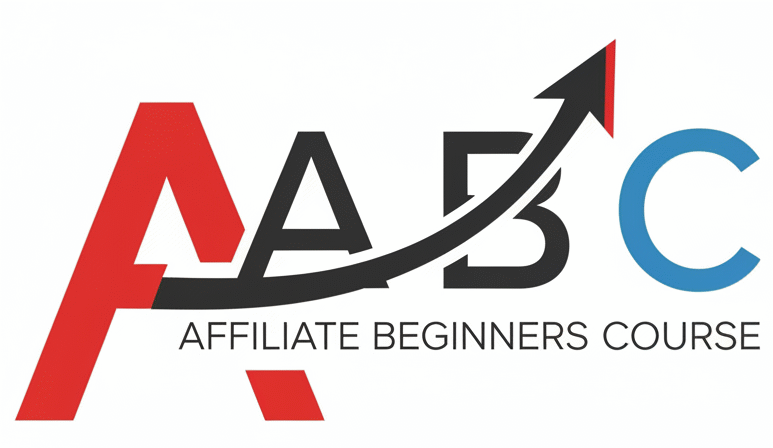Starting an affiliate marketing journey can be exciting, but also confusing. Between choosing the right products, building traffic, and tracking performance, beginners often get stuck on one key problem: which free affiliate marketing tools do I really need to succeed?
The truth is, you don’t need expensive subscriptions to grow. There are plenty of free affiliate marketing tools that can help you research keywords, design content, build email lists, and track your results effectively.
In this guide, you’ll discover 10 of the best free tools for affiliate marketers, carefully chosen for present time. Each of these tools helps solve a different part of your affiliate marketing journey; from research to promotion and conversion.
1. Google Trends — Discover Hidden Affiliate Marketing Opportunities

If you want to find trending topics or products to promote, Google Trends will help you achieve that as an affiliate. Google trends is a free tool that helps affiliate marketers understand what the world is searching for and more importantly, how peoples interest changes over time.
Assume that you’re in the fitness niche. You can compare search interest for “home gym equipment” vs “resistance bands” to decide which product has a rising trend.
The magic lies in spotting growth curves early. If the graph shows the search interest climbing steadily, that’s your cue to create content around it before competitors catch on. Combine Google Trends insights with long-tail keywords, and you’ll have a strong start for SEO (Search Engine Optization).
Pro tip: Always check the “Related Queries” section. It often reveals new keyword ideas that are best for future blog posts or YouTube videos.
2. Ubersuggest — Find Profitable Keywords for Affiliate Content
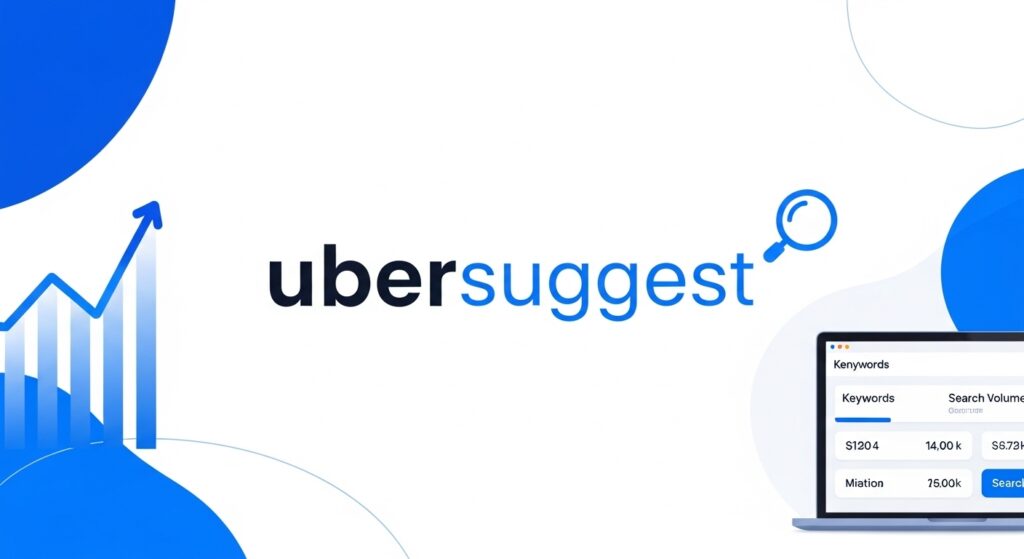
One of the hardest task you can perform as an affiliate is finding keywords that people search for but aren’t too competitive. Ubersuggest, created by Neil Patel, solves this problem in a professional way.
With Ubersuggest, you can have access to search volume, SEO difficulty, and even the content ideas that already rank for your target keyword. The free plan offers a handful of daily searches, more than enough for beginners like you planning weekly blog posts.
For example, if you type in “best protein powder for beginners” it will show you variations like “cheap protein powder for weight gain” or “best time to take protein powder”. All of these are best for long-form affiliate blog ideas.
While creating your blog titles, meta descriptions, and internal link structures, use these keyword variations that search engines love.
3. Google Search Console — Measure What’s Working on Your Blog
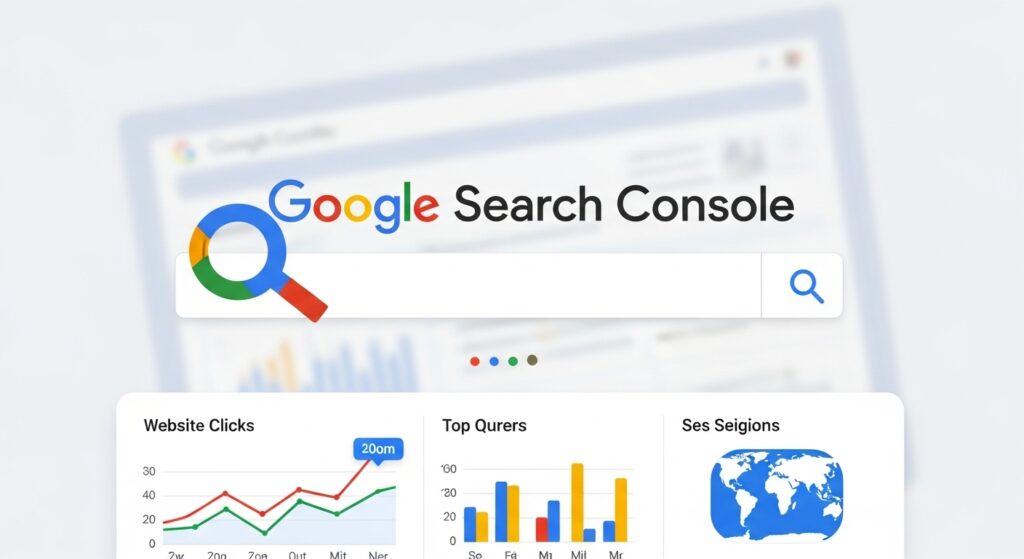
You shouldn’t just create a blog post and leave it without monitoring. Once you start publishing affiliate content, you need to know how it performs. Google Search Console (GSC) is a free, indispensable tool that helps you know which search terms bring visitors to your site and how each page on your blog is performing on Google search pages.
You’ll see exactly which keywords that people searched for that pulled up your posts. The click-through rate (CTR), and your position on Google. Knowing these data will help you optimize titles and improve underperforming pages.
For instance, if you notice your article on “affiliate programs in Nigeria” displays at position 12 on the search engine result page (SERP), you should add more detail, internal links, or FAQs to push it into the top 10. This strategy encourages free traffic to happen.
Read: 10 Powerful Ways AI Can Boost Your Affiliate Marketing Results (Even If You’re a Beginner)
4. Google Analytics 4 — Track Affiliate Clicks and User Behavior

Google Analytics 4 (GA4) works perfectly with Google search console by tracking what visitors actually do after arriving on your site. You can see which of your posts engage users, where they drop off by leaving your site, and which links they click.
As an affiliate marketer, this information is goldmine. It helps you know which product reviews lead to link clicks, or which call-to-action (CTA) buttons perform best. With a few simple event settings, Google Analytics 4 can even help you track how many clicks your affiliate link gets, helping you identify which articles actually bring you sales.
When you are able to identify exactly the post on your blog that bring in the highest sales for you, you can focus your energy there and scale it up for even more conversions.
5. WordPress and Yoast SEO — Build, Optimize, and Rank

WordPress is free and flexible. This is why most affiliate blogs today run on WordPress. It’s also supported by thousands of themes and plugins tailored for online marketing.
To maximize your SEO potential, install Yoast SEO. This is a WordPress plugin that guides you through optimizing every post by checking for keyword density, meta description quality, readability, and internal links. You know what? These are very important metrics to ranking high on Google search pages.
If you desire is to build a professional affiliate marketing business, WordPress and Yoast SEO shouldn’t be out of your plans. They will help you control your contents, build brand authority, and never rely solely on social media platforms that can wake up tomorrow and make a policy that will end your business.
6. Canva — Design Beautiful Graphics to Boost Clicks

A blog post or social ad without an eye-catching visual can still fail to convert. That’s where Canva comes in. Canva is one of the most powerful yet free graphic design tools for affiliate marketers.
Canva can help you create blog banners, YouTube thumbnails, Instagram posts, and product comparison charts. You can achieve this without a graphic design experience as Canva consist of drag and drop interface.
As a beginner affiliate marketer, you can start with one of the free Canva templates. You’ll have the option to add your colors and images, export the result in minutes. With visuals, your posts don’t just look professional, they increase your credibility and help your audience recognize your brand instantly.
If you’re sharing your affiliate links on social platforms, Canva’s templates for Pinterest and TikTok graphics can drive even more engagement.
7. MailerLite — Build and Nurture Your Affiliate Email List

Affiliate marketing isn’t just about getting people to click on your affiliate link. As an affiliate, you should understand that Affiliate marketing is about relationships. One of the best ways to keep your audience engaged is through email. This will encourage solid relationship between your leads and you. MailerLite, an email marketing solution offers a generous free plan that’s perfect for beginners like you.
Logging into your MailerLite dashboard will present you with a platform to design landing pages, create opt-in forms, and send automated email sequences.
For example, you might offer a free “Affiliate Marketing Starter Checklist” as a lead magnet to capture emails. Once someone subscribes, MailerLite can automatically send them a welcome email, then follow up with product recommendations tied to your affiliate links. All these you must have set up from your MailerLite dashboard.
Email marketing is where many affiliates see consistent income as it’s personal, permission-based, and long-term. Signup FREE on MailerLite here.
8. Bitly — Track and Optimize Your Affiliate Links for Free

Affiliate links are often long and unattractive. Most times, people see them as spam links. So to overcome that challenge, Bitly helps by shortening affiliate links and also a system to track your clicks.
With this, you will get a clean, professional-looking links that are easier to share across blog posts, emails, and social media. And to make it more amazing, Bitly shows how many people clicked, from where, and when.
By tracking your affiliate link performance, you can compare which call to action buttons perform best; like “Learn more” versus “Buy now”. Over time, this helps you improve conversion rates with real numbers, not guesses.
Always remember to state that you’re sharing affiliate links. Especially when you’re sending it as a direct message. By so doing, you’ll stay compliant with platform rules and maintain trust.
9. Hunter.io — Build Backlinks and Collaborate with Other Marketers

As your affiliate site grows, you’ll need collaborations from other related sites/blogs. This is known as backlinks and it’s a great strategy to increasing your domain authority and helps you rank faster on Google search pages. Hunter.io helps you find verified contact emails for any website, making outreach effortless.
You can use it to reach out for guest posts, link swaps, or product collaborations. For instance, if another blogger has a similar niche, offer to write a free guest post that links back to your own blog. This strengthens your post and make it eligible to rank even higher on Google SERP.
It will be a great milestone to get one high-quality backlink from a reputable blog than ten low-value links. Backlinking from top blogs adds more sauce to your contents SEO life. To get started, Hunter.io helps you find those opportunities quickly.
10. Chrome Extensions — Save Time with Instant SEO Insights
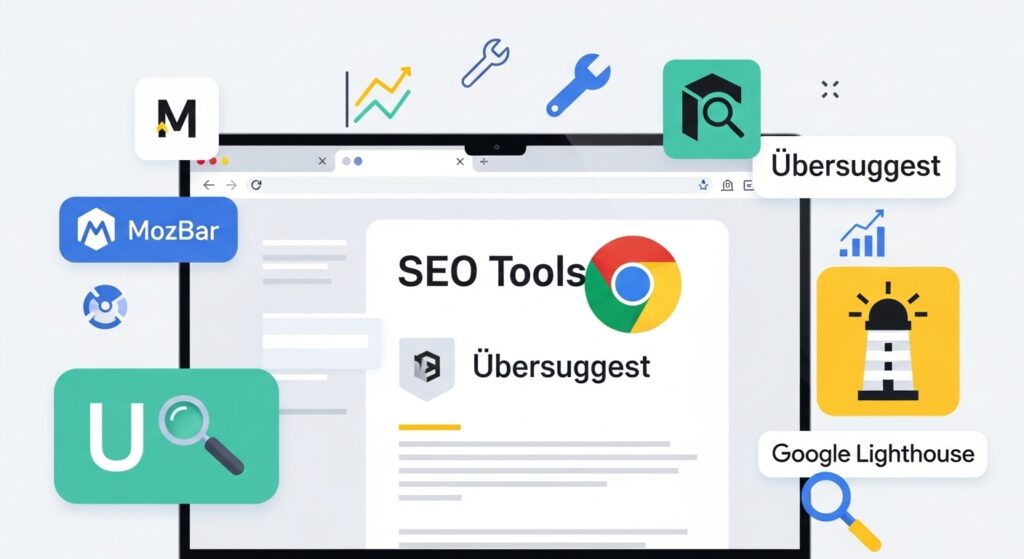
Finally, let’s talk about small but powerful tools: free Chrome extensions. A few minutes of setup can give you real-time SEO data right inside your browser.
Some must-have options include:
• MozBar: Shows page authority, backlinks, and keyword metrics.
• Ubersuggest Extension: Displays keyword volume and difficulty right on Google results.
• Lighthouse: Built into Chrome; audits your site’s speed, accessibility, and SEO.
These tools help you research competitors, analyze top-ranking pages, and identify areas to improve on your own blog. And you can do all these without leaving your browser tab.
How to Combine These Free Tools for Maximum Results
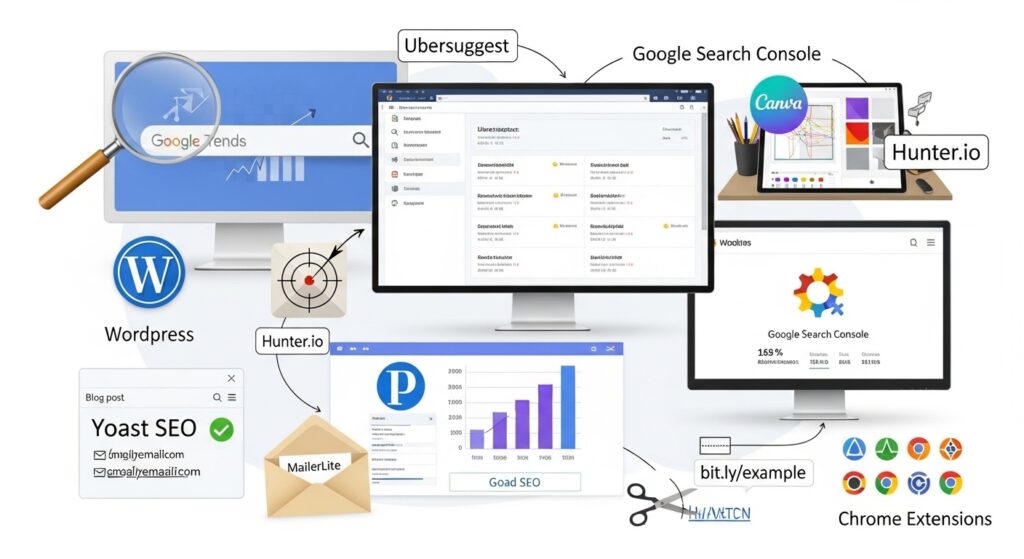
Here’s how a beginner affiliate marketer can use these 10 free tools effectively:
1. Blog Topic Research: Google Trends and Ubersuggest will help you discover profitable, low-competition topics.
2. Create & Optimize: write your posts on WordPress, optimize for SEO with Yoast, and design your graphics with Canva.
3. Publish & Promote: Share your posts on social media using Bitly for trackable links. Avoid sharing with original link as it will appear long and spammy.
4. Grow & Nurture: Collect leads through MailerLite email marketing solution and don’t forget to always engage your subscribers with automated email sequences.
5. Analyze & Improve: Track performance with Google Analytics 4 and Search Console, then expand authority with Hunter.io and Chrome SEO tools.
This simple workflow can take a new affiliate blog from start to consistent daily earnings without spending a dollar on paid/premium tools.
Recommended External Resources for Deeper Learning
• Google Trends — explore trending keywords
• Ubersuggest — keyword ideas & SEO metrics
• MailerLite — free email automation
• Canva — free design templates for marketers
• Yoast SEO — free WordPress SEO plugin
• Hunter.io — find outreach contacts for backlinks
• Bitly — track affiliate link performance
Final Thoughts
Affiliate marketing pays those who consistently implement the right skills and strategies. It is not about perfection. As a beginner in Affiliate marketing, you don’t need to invest in fancy tools or premium subscriptions right away. The best free tools for affiliate marketers that you just read already cover everything you need to research, create, promote, and measure your progress.
Start with two or three tools from this list. I’ll recommend Ubersuggest for your post titles research, Canva for your graphics/visuals, and MailerLite for email marketing. As your confidence and website/blog visit grow, you can upgrade to premium tools later.
The important thing is to begin now, experiment with strategies, and learn from the results. Success in affiliate marketing doesn’t depend on how much you spend, it depends on how well you use what’s free.

